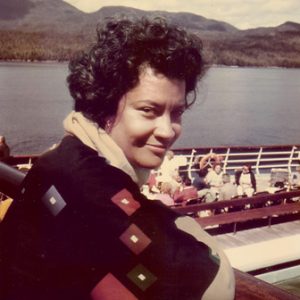We see you every day, handing you a lockers key as you walk in each morning, and receiving it back toward the end of the day.
What brings you to Columbia’s Rare Book & Manuscript Library?
[I’m here to] rummage archival properties for information that describes the challenges, path and journey taken to build a profile for Norma Merrick, the first African American female to graduate from the Columbia University School of Architecture (1946 to 1950) and become licensed that same year. I learned from Avery Library that the type of information that I was seeking (e.g. architectural course offerings, access to student activities, events, residential spaces, building and grounds, campus newspapers, correspondence records of attendance, etc.) could best be found in RBML. In particular I wanted to know the structures in place that helped Merrick continue enrolling in a program that had few women and possibly no other people of color. Above this, I was impressed that she was able to graduate on-time — that is, in four years.

How long have you been using RBML materials?
I arrived in early January 2019, after an Avery Hall librarian, informed me to further inquire on the 6th Floor of Butler. As a matter of fact, she directed me to the Rare Books and Manuscripts desk where I explained briefly why I was there and I was given the card of Ms. Jocelyn K. Wilk. I sent Ms. Wilk an email with much of the above mentioned information. Her immediate responding put me in the library within days. I attend the library twice a week.
What have you found?
I have in great abundance research on the Architecture school in terms of enrollment and conditions contributing to an increase and decrease in counts mainly due to the War years. I located School Bulletins with Ms. Merrick’s name as evidence of her continuous enrollment each year. I also learned how students were selected. For example, acceptance was based on the grounds of character, health, as well as fulfillment of academic requirements. In choosing the Freshman class, “the college kept in mind the desirability of having a student body … cross section of the country geographically, economically, socially … to be educationally valuable to know one another and work together.” In other words, the class size was always small.
…Norma Merrick, the first African American female to graduate from the Columbia University School of Architecture and become licensed that same year.
Did you know these materials were here?
I did not know the materials were here, and based on my limited knowledge of the field of architecture and Norma Merrick, my knowledge base has been embellished with details located in the documents searched, the pleasant staff and highly competent and friendly professional, Ms. Wilk.
What have you found that’s surprised or perplexed you?
I had no idea how many women enrolled in Columbia during the time of the War. I also did not know of Columbia’s connection with the Department of Veteran’s Affairs, and how veteran’s enrollment, that is the military support, impacted the University’s finances during that time to the advantage of women.
What advice do you have for other researchers or students interested in using RBML’s special collections?
Stick to the task…Always, believe that the assistants in Rare Books can find what you are looking for and/or point you in the right direction.
Have a clear idea about the subject you wish to study. Block out a timeline of ideas, information and activities you wish to cover. Stick to the task. Ask questions about ideas that you wish to know, be polite and pleasant to the professionals on the floor because they are trained to answer questions that you do not know how to ask. Always, believe that the assistants in Rare Books can find what you are looking for and/or point you in the right direction.